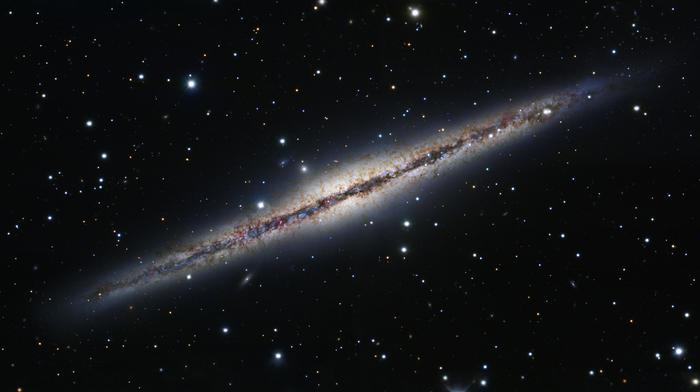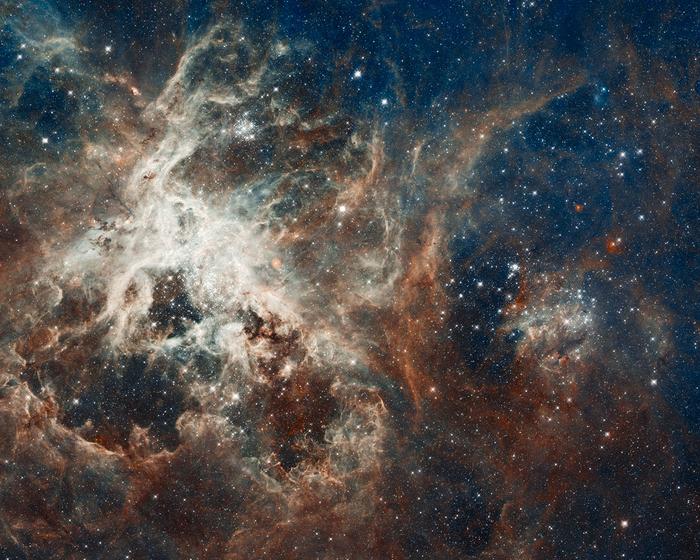This Is How Little a Plane Weighs
A Boeing 747 without its engines faces a little wind:
SpaceX Dragon Docks With the International Space Station
SpaceX’s Dragon capsule just docked with the ISS.
In their own words:
Today, Space Exploration Technologies (SpaceX) made history when its Dragon spacecraft became the first commercial vehicle in history to successfully attach to the International Space Station. Previously only four governments—the United States, Russia, Japan and the European Space Agency—had achieved this challenging technical feat.
The vehicle was grappled by station’s robotic arm at 9:56 a.m. Eastern. It was pulled in Dragon’s passive common berthing mechanism successfully attached to the orbiting laboratory at 12:02 PM Eastern.
SpaceX CEO and Chief Designer Elon Musk will join NASA Space Station Program Manager Mike Suffredini, NASA COTS Program Manager Alan Lindenmoyer and NASA Flight Director Holly Ridings for a press conference to discuss the remarkable achievement at 1:00 PM Eastern.
When asked for his initial thoughts on Dragon’s capture and move into the history books, Elon Musk stated, “just awesome.”
This is SpaceX’s second demonstration flight under a 2006 Commercial Orbital Transportation Services (COTS) agreement with NASA to develop the capability to carry cargo to and from the International Space Station. Demonstration launches are conducted to determine potential issues so that they might be addressed; by their very nature, they carry a significant risk. If any aspect of the mission is not successful, SpaceX will learn from the experience and try again.
I was sad when NASA was forced to cancel their shuttle program. Angry.
Now, people everywhere, including Paul Allen, John Carmack and Jeff Bezos, are building rockets. Mr. Bigelow is building inflatable space habitats. Richard Branson has launched the first spaceline.
Maybe it’s not so sad. Maybe it’s the beginning of something very, very big.
Space.
At the Edge of NGC 891
From NASA APOD:
This sharp cosmic portrait features NGC 891. The spiral galaxy spans about 100 thousand light-years and is seen almost exactly edge-on from our perspective. In fact, about 30 million light-years distant in the constellation Andromeda, NGC 891 looks a lot like our Milky Way. At first glance, it has a flat, thin, galactic disk and a central bulge cut along the middle by regions of dark obscuring dust. The combined image data also reveals the galaxy’s young blue star clusters and telltale pinkish star forming regions. And remarkably apparent in NGC 891’s edge-on presentation are filaments of dust that extend hundreds of light-years above and below the center line. The dust has likely been blown out of the disk by supernova explosions or intense star formation activity. Faint neighboring galaxies can also been seen near this galaxy’s disk.
Scorpius in Red and Blue
From NASA APOD:
Cosmic dust clouds dim the light of background stars. But they also reflect the light of stars nearby. Since bright stars tend to radiate strongly in the blue portion of the visible spectrum, and the interstellar dust scatters blue light more strongly than red, the dusty reflection nebulae tend to be blue. Lovely examples are the wispy blue reflection nebulae near bright, hot stars Pi and Delta Scorpii (upper left and lower right) in this telescopic skyscape from the head of the constellation Scorpius. Of course, the contrasting red emission nebulae are also caused by the hot stars’ energetic radiation. Ultraviolet photons ionize hydrogen atoms in the interstellar clouds producing the characteristic red hydrogen alpha emission line as the electrons recombine. About 600 light-years away, the nebulae are found in the second version of the Sharpless Catalog as Sh2-1 (left, with reflection nebulae VdB 99) and Sh2-7. At that distance, this field of view is about 40 light-years across.
Star Formation in the Tarantula Nebula
From NASA APOD:
The largest, most violent star forming region known in the whole Local Group of galaxies lies in our neighboring galaxy the Large Magellanic Cloud (LMC). Were the Tarantula Nebula at the distance of the Orion Nebula — a local star forming region — it would take up fully half the sky. Also called 30 Doradus, the red and pink gas indicates a massive emission nebula, although supernova remnants and dark nebula also exist there. The bright knot of stars left of center is called R136 and contains many of the most massive, hottest, and brightest stars known. The above image is one of the largest mosaics ever created by observations of the Hubble Space Telescope and has revealed unprecedented details of this enigmatic star forming region. The image is being released to celebrate the 22nd anniversary of Hubble’s launch.



